Need compute, storage, and networking infrastructure without the capital investment? IaaS delivers those resources over the internet on demand, along with the cloud services you need to build, deploy, and maintain almost any application.
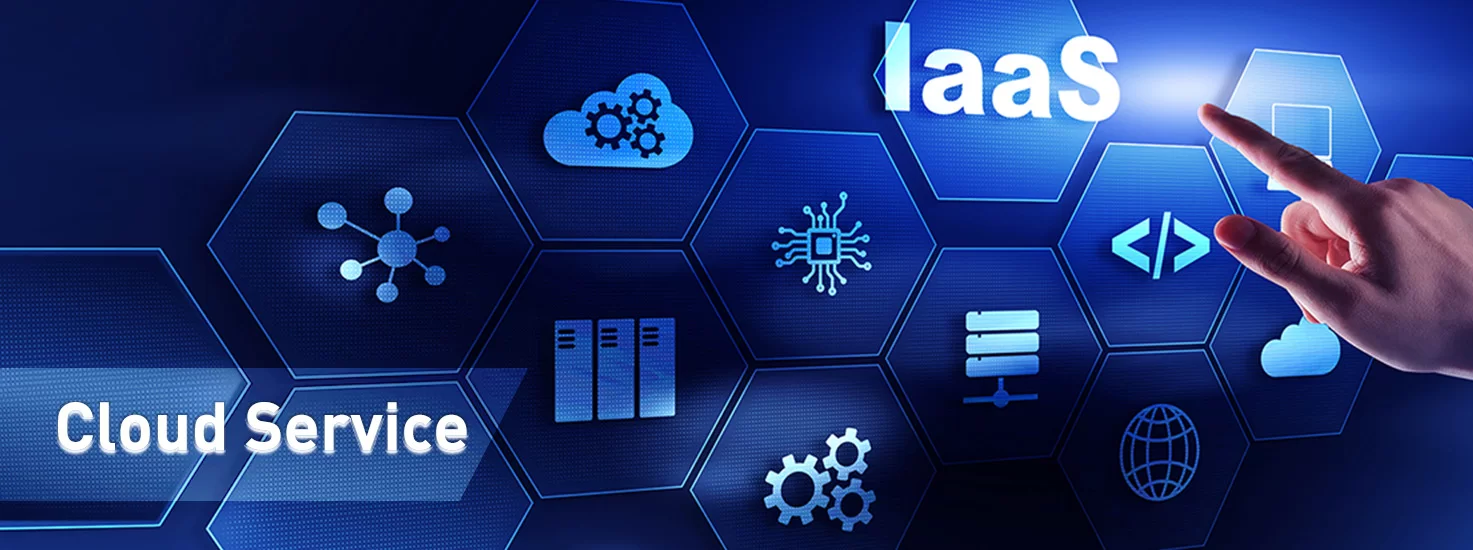
IaaS (infrastructure as a service) is a type of cloud computing that offers virtualized compute, storage, and networking wrapped together as a self-service platform upon which customers can deploy and run applications with minimal fuss.
The household names of cloud computing—AWS (Amazon Web Services), Microsoft Azure, and Google Cloud—are IaaS providers. All three maintain giant data centers around the world that include tons of physical servers, storage systems, and networking equipment under a virtualization layer that enables cloud customers to allocate those resources in a highly automated manner.
Key to the value of IaaS is the ability to provision and scale up virtualized resources on demand for any workload. Organizations that use IaaS can self-provision infrastructure services and pay for them on a per-use basis. Fees are typically paid by the hour, week, or month, depending on the service contract. In some cases, providers charge clients for infrastructure services based on the amount of virtual machine (VM) capacity they’re using over time.
Atop that virtualized infrastructure, the leading IaaS clouds have cultivated vast ecosystems of services, from globally distributed relational databases to data warehouses to machine learning libraries to IoT management solutions. Today, a frequent motivation to choose an IaaS provider is to gain access to new, innovative technology that would be difficult to spin up on premises. Some of these advanced services are developed and delivered by the provider, while others are proffered by third-party tenants on the IaaS platform—again, on a per-use basis.
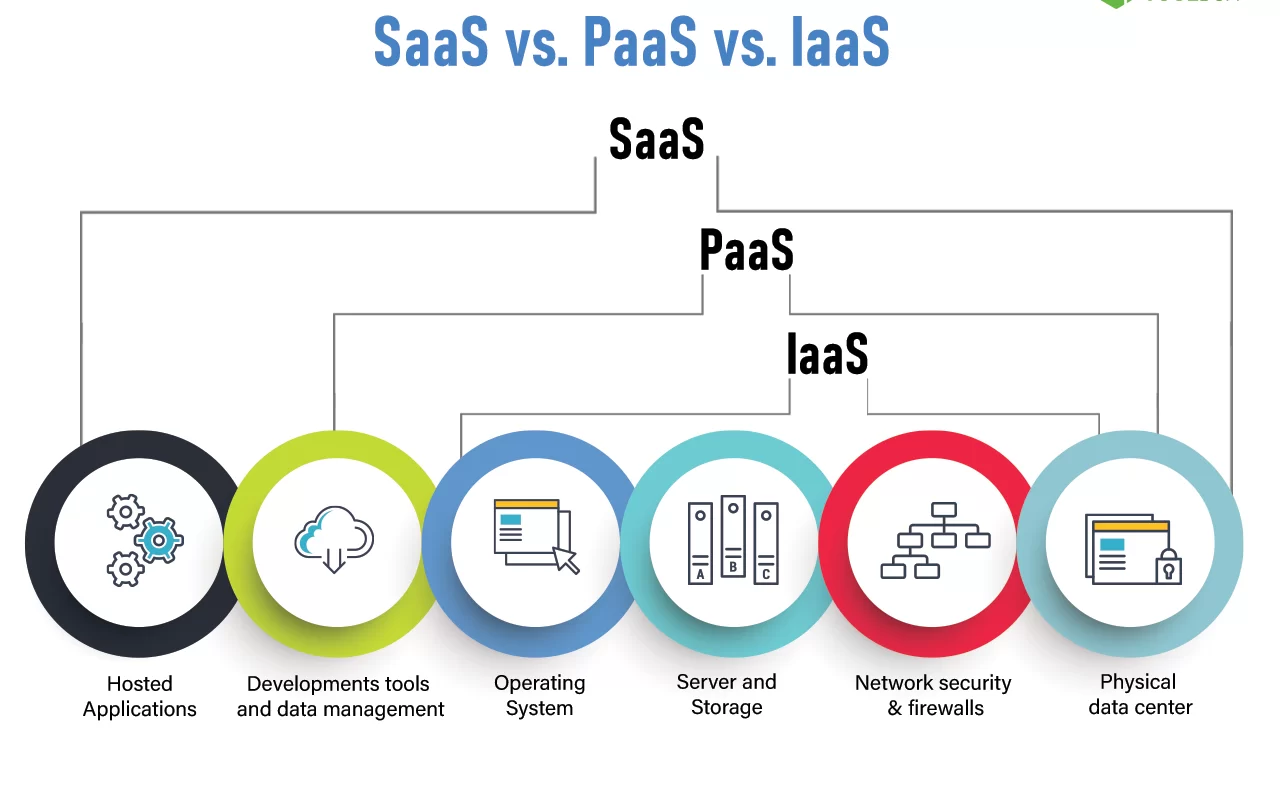
IaaS vs. PaaS vs. SaaS
IaaS is one of three main types of cloud services, along with software-as-a-service (SaaS) and platform-as-a-service (PaaS). Like PaaS and SaaS, IaaS offers access to its services across a public connection that’s typically the internet. But IaaS alone provides full access to the underlying virtualized resources, plus an expansive selection of cloud software and services on top.
Most IaaS providers now provide some form of PaaS, a cloud-based offering that delivers platforms to clients enabling them to develop, run, and manage business applications without the need to build and maintain the platform elements such software development processes typically require. But some providers (such as Heroku) still deliver PaaS alone.
SaaS, by contrast, is a software distribution model. SaaS providers develop and maintain applications that are available to customers over the internet on a subscription or pay-per-use basis. Typically, the user interfaces for those applications are browser-based. The vast majority of enterprise applications today are either available in a SaaS version or are exclusively SaaS-based.
True cloud computing—be it IaaS, PaaS, or SaaS—is multitenanted. This means multiple clients share the cloud provider’s software and physical data center resources, but each customer’s data is kept separate and secure, accessible only by that customer. Multitenancy is both highly efficient and scalable, enabling cloud computing’s generally low costs.
Nonetheless, all major IaaS providers also offer single-tenancy—that is, infrastructure exclusive to a single customer—as an option. Regulatory issues or stringent security policies typically drive this choice, which can double costs. Single-tenant offerings resemble traditional hosting services, where a third-party provider essentially rents dedicated space in its data center. But single-tenant IaaS also offers cloud-specific capabilities such as quick scalability and access to a wide range of services that hosting companies seldom provide.

Top IaaS providers
According to Synergy Research Group, $44 billion was spent on IaaS and PaaS (the latter commonly offered as an IaaS service) in the first quarter of 2022. People frequently refer to the “big three” cloud providers, but in terms of market share, it’s more like the big two and everyone else.
AWS
Launched in 2006, Amazon Web Services was the first commercial IaaS cloud to appear on the scene. The first AWS service was S3, a cloud storage offering; EC2 (Elastic Compute Cloud) debuted shortly thereafter. From the beginning, AWS was conceived of as a “have it your way” platform, where developers could assemble and deploy applications using their preferred databases, orchestration options, libraries, and so on. To this day, that positioning has given AWS the largest ecosystem of services for customers to mix and match, not to mention the largest market share.
Microsoft Azure
Initially launched as a Microsoft .NET PaaS, Azure was soon reworked into a full IaaS cloud that today rivals AWS in its breadth of services—while offering special support for Microsoft technologies. With its gigantic business software customer base, Microsoft has the advantage of being able to bundle Azure services with Microsoft SaaS applications and licensed software, which has helped establish Azure as a strong and growing No. 2 in market share. Integration with on-premises Microsoft systems and a heartfelt embrace of open source software have been key assets as well.
Google Cloud Platform
As the titan of search, Google has the largest compute infrastructure in the world, so it was only natural for the company to open and expand those vast data center resources to offer IaaS to customers. Arguably, Google has also developed the most innovative cloud technology—it led the way in the initial spec for Linux containers and established the open source Kubernetes project, which together have ushered in the cloud native era. But Google’s IaaS technologies and services tend to have a steeper learning curve, with fewer third-party services on offer. Though gaining in market share, Google Cloud Platform remains a relatively distant third.
Alibaba Cloud
Like Amazon, Alibaba is a giant e-commerce marketplace that also provides IaaS—and differentiates itself with an abundance of mainly third-party cloud services. China’s largest cloud, Alibaba also develops its own technology, notably sophisticated AI and machine learning solutions, as well as high-performance database tech that can accommodate huge spikes in demand. Alibaba’s steady increase in market share is largely localized to East Asia, subject to the constraints of China’s Great Firewall.
IBM Cloud
When IBM acquired the independent IaaS provider SoftLayer in 2013, it looked as if Big Blue had a shot at becoming one of the top IaaS players in the industry. Around the same time, IBM launched its well-regarded Bluemix PaaS and began offering a line of Watson cloud services. But the pieces never really came together as a cloud ecosystem that could compete with the front runners, leading to a decline in IaaS market share. Instead, IBM has primarily become a purveyor of hybrid cloud solutions, augmented by the company’s 2018 acquisition of Red Hat.
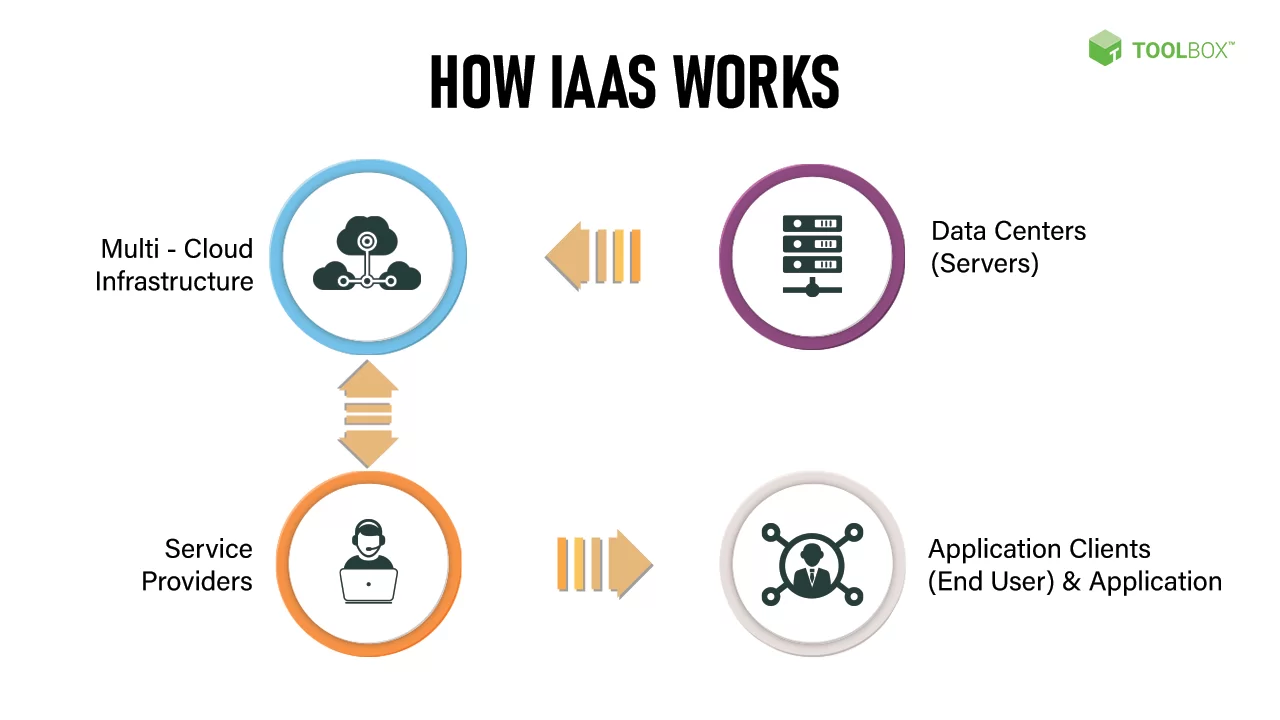
IaaS business benefits
Among the main business benefits of IaaS—just as in other cloud offerings—is that it enables a level of agility not possible with traditional IT infrastructures that rely on on-premises data centers.
IaaS platforms provide access to highly scalable IT resources that can be adjusted as demand for capacity changes. This makes the IaaS model ideal for companies that experience temporarily high workloads, such as what many retailers face during the holiday shopping season. It’s also well suited to small and mid-size businesses that expect to see growth in demand on a steady basis.
Companies today are looking to be more flexible to better compete with web-based businesses that can make changes on the fly. Increased business agility and scalability are among the key business drivers to IaaS.
So is cost savings. By shifting IT infrastructure to the cloud, you can save on capital and operating expenditures. By paying for computing capacity only as it’s needed, you can reduce the costs of underutilized resources. You can also decrease IT hardware maintenance costs because of the decreased reliance on in-house data center hardware. Cloud-monitoring tools and a cloud-savvy cost model can help you identify hidden costs and wasted spending and avoid spiraling IaaS bills.
Keep in mind, though, that cost savings may not be realized if you simply migrate applications from the data center to the cloud without refactoring them. Make sure your applications and other systems use cloud resources efficiently. In the metered world of IaaS, you pay for wasteful usage at the same price as effective usage.
One other benefit of IaaS is flexibility in terms of location. Organizations can access IaaS offerings from virtually any place where there is access to the internet.
There’s also the advantage of availability. Because cloud providers rely on multiple facilities, there is no single point of failure. They also distribute their facilities to reduce latency based on where the customer location is.
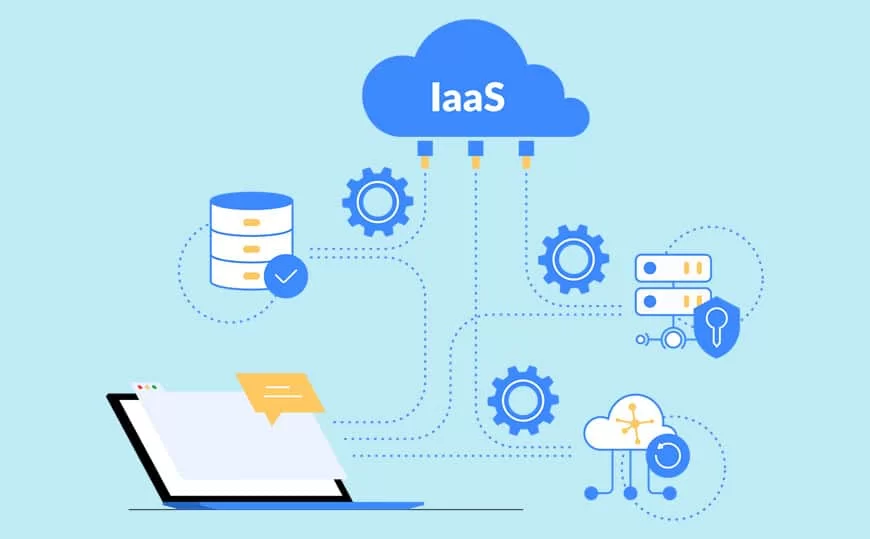
IaaS use cases
Today, if you ask what customers use IaaS for, expect answers as wide-ranging as business computing itself. In case study after case study, we encounter companies who’ve moved the bulk of their operations to “the cloud.” Generally, that means they now use SaaS applications instead of licensed on-prem applications, and they’ve moved their proprietary software and systems from the data center to an IaaS provider (or two or three).
So while its worthwhile to know about the most popular cloud services offered by IaaS platforms—data warehouses, disaster recovery solutions, serverless computing platforms, and so on—the point is that IaaS clouds are intended to be platforms on which you can build pretty much anything. Those applications can be aggregated in broad groups, as Gartner did in a recent report:
Digital business: With nearly every business affected by digital disruption, digital business needs account for a majority of workloads in IaaS. Digital business use cases include digital marketing, e-commerce, customer resource management, software-as-a-service, data services, and internet of things (IoT) applications.
Agile projects: Many organizations have launched IT projects that they’re executing in an agile fashion. Rapid application development, prototyping, experiments, and other projects that require agility, flexibility, and the ability to meet urgent infrastructure needs are often executed on IaaS.
Data center substitution: At many organizations, IaaS is gradually replacing or supplementing traditional, on-premises data center infrastructure. In these cases, IaaS is typically used similarly to an organization’s internal virtualization environment, and companies generally begin with development environments or less-critical production applications, then gradually expand their use of IaaS to host critical applications as they gain more experience and trust.
Batch computing: This is the least common need for IaaS, Gartner says. In these cases, IaaS serves as a substitute for traditional high-performance or grid computing. Possible applications include rendering, video encoding, genetic sequencing, modeling and simulation, numerical analysis, and data analytics.
The point is that IaaS has become the default platform for building and running modern business systems intended for either customers or employees. The scalability, automation, and orchestration capabilities available in the IaaS clouds, plus the thousands of services offered by providers, enable the kind of agility that could only be dreamed of before the cloud era.
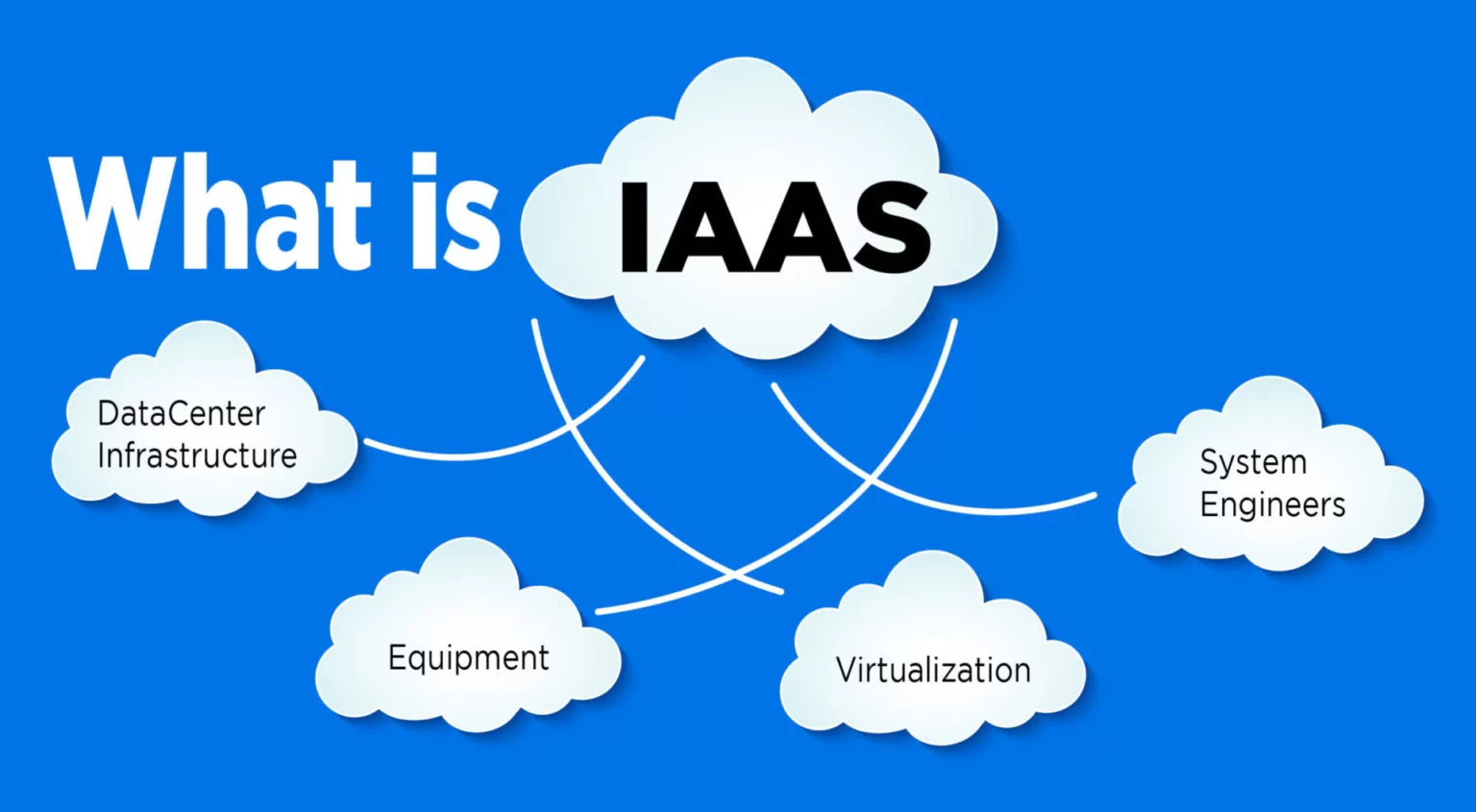
Private and hybrid cloud IaaS
For years cloud pundits have debated whether there’s really such a thing as the private cloud in IaaS form—that is, on premises, in the customer’s data center. After all, one of the biggest benefits of IaaS is that it relieves the burden of procuring, provisioning, and maintaining physical infrastructure. If you have to do it yourself, is it really IaaS?
That’s a valid question, particularly if you’ve simply deployed the full stack of server virtualization and software-defined infrastructure management on top of physical servers, storage systems, and network switches. Once such a system has been set up, it may appear cloud-like to developers and business stakeholders, but there’s typically considerable maintenance going on behind the scenes—and scaling up overall capacity ultimately means buying and provisioning new hardware.
But new private cloud schemes have emerged in recent years that add validity to the notion. Notably, Amazon, Microsoft, and Google now enable you to snap off a piece of their platforms in the form of racks of managed servers that live in your data center, preloaded with the same software that powers their respective public clouds. Some of these on-prem cloud outposts offer access to the gamut of services hosted by the cloud mothership. Since these private IaaS islands look and feel like the clouds from whence they came, the main reason to adopt them is to meet data residency requirements stipulated by government or industry policy.
The traditional data center arms dealers are also veering toward the virtualized, containerized, ultra-scalable IaaS model with what amounts to a sophisticated leasing program for their hardware. For example, Dell, HPE, and Lenovo now offer on-prem clouds in the form of cloud infrastructure software running on pay-per-use hardware, overprovisioned to give you the headroom to increase capacity on the fly. When properly set up and maintained by professional services providers, these on-prem IaaS clouds warn in advance if they get anywhere near their capacity limit, so that new hardware can be ordered and provisioned before that wall is hit.
When any of these private IaaS schemes are integrated with a public cloud, the term of art to describe it is the hybrid cloud. This term can mean parallel local and remote IaaS environments, across which applications can be migrated freely, or it can refer to much less ambitious efforts to integrate the two platforms. Because most enterprises today are customers of IaaS providers, hybrid clouds abound, whether or not that terminology is used. It’s all about deciding which workloads are most suitable for which environments and how much effort should be expended in reaping the benefits of connecting the two.
Operational IaaS benefits
The common denominator among IaaS platforms is that they turn compute, storage, and networking infrastructure into liquid, software-defined assets that can be applied as needed for any job. The self-service cloud approach becomes manifest in web-based user interfaces and APIs, management tools delivered as services, and the whole catalog of service offerings. Gartner cites these important features delivered by the top IaaS platforms:
Both public and private cloud IaaS: A single architecture and feature set and cross-cloud management for both public and private clouds let you move workloads across the different service models depending on your needs.
High security standards: Although all the providers claim they have high security standards, the extent of the controls they provide to customers varies greatly. All generally offer services that meet common regulatory compliance requirements, and they typically have SSAE 16 audits for their data centers. Some might also have third-party security assessments for their IaaS offerings.
High availability: Monthly compute availability service-level agreements (SLAs) of 99.95 percent and higher are typical—generally higher than availability SLAs for managed hosting. Many providers have additional SLAs that cover network availability and performance, as well as customer service responsiveness.
Hourly pricing: All the providers offer per-hour metering of VMs, and some offer shorter metering increments that can be more cost-effective for short-term batch jobs, Gartner says. Most providers charge on a per-VM basis, and some offer a shared-resource pool pricing model or are flexible about how they price services.
IaaS disadvantages
As with any other type of cloud service, IaaS comes with several risks and challenges that organizations need to address.
Among the key concerns are cybersecurity threats. Cloud security is a shared responsibility between the provider and the customer. The major clouds are pretty much bulletproof when it comes to brute force attacks from malicious hackers whose aim is disruption or theft of valuable data. But each public IaaS player has its own security model and set of security features that customers must learn in depth to avoid exposing data or opening the door to mischief. Differences among these security schemes can be confusing to the point of serious risk when customers deal with multiple IaaS providers.
There’s also a security risk when employees of the service provider have direct access to the cloud infrastructure, including hardware, networks, and hypervisors. More commonly, poor access management by customers may result in people retaining their IaaS access even after they are no longer employees.
Some of these security and privacy risks can lead to difficulties complying with government regulations. This is especially true for companies in highly regulated industries such as healthcare and financial services.
Another potential challenge is the complexity of managing an IT environment that relies heavily on cloud services provided by an outside entity. There will naturally be some loss of control as a result of relying on a service provider for critical IT functionality, and because IaaS providers own and maintain the infrastructure, managing and monitoring that infrastructure might be more difficult for companies.
Cloud talent is a related concern. The IT industry is experiencing a severe talent shortage across a wide range of areas, but those who are intimately familiar with the ins and outs of specific IaaS platforms are in especially high demand. Learning the best practices for cloud operations (aka, cloudops) is not a trivial matter, particularly as that relates to conserving cost.
Then there’s the lock-in problem. Although IaaS providers like to talk about standardization, the fact is, as soon as a customer uses some shiny proprietary service to create or operate applications, switching to another cloud becomes much more daunting. Also, although IaaS clouds welcome as much data as the customer is willing to upload and store it at low cost, the cost of exfiltrating that data tends to be high.
Finally, there are risks associated with the service providers themselves, particularly smaller ones. The market continues to consolidate around AWS, Microsoft, and Google—so you should be aware that some providers could make significant changes in the direction of their IaaS strategy. That includes replacing their current offering with a new platform, or even getting out of the IaaS business altogether.
Despite these and other challenges, the IaaS model defines the future of infrastructure. Spending on public cloud services by enterprises is already beginning to exceed spending on local solutions. No wonder. The agility, scalability, and instant access to valuable new technologies offered by the big IaaS providers will ensure the march to cloud continues apace.
About TechX Corp.
TechX Corporation is “AWS Partner of the Year” 2021 – 2022 in Vietnam.
TechX Corporation is a young startup, founded in 2020 by a team of well-established technology experts, with years of experience in multi-national enterprises and VN30 corporations with the mission of supporting Vietnamese companies in their digital transformation journey. TechX’s team of cloud experts possesses a comprehensive insight of Vietnam market, especially in major industry such as banking and finance, technology, E-commerce, etc.
Became AWS Advance Consulting Partner in less than 1 year since its establishment, TechX has been leveraging AWS advance cloud services and technology to provide tailored cloud transformation solutions our customers. Currently, TechX Corp. proud to be cloud consulting partner to top banks and financial institutes in Vietnam, such as Maritime Bank (MSB), Vietnam International Bank (VIB), VietinBank, FE Credit, etc., and many other companies in different industries.
